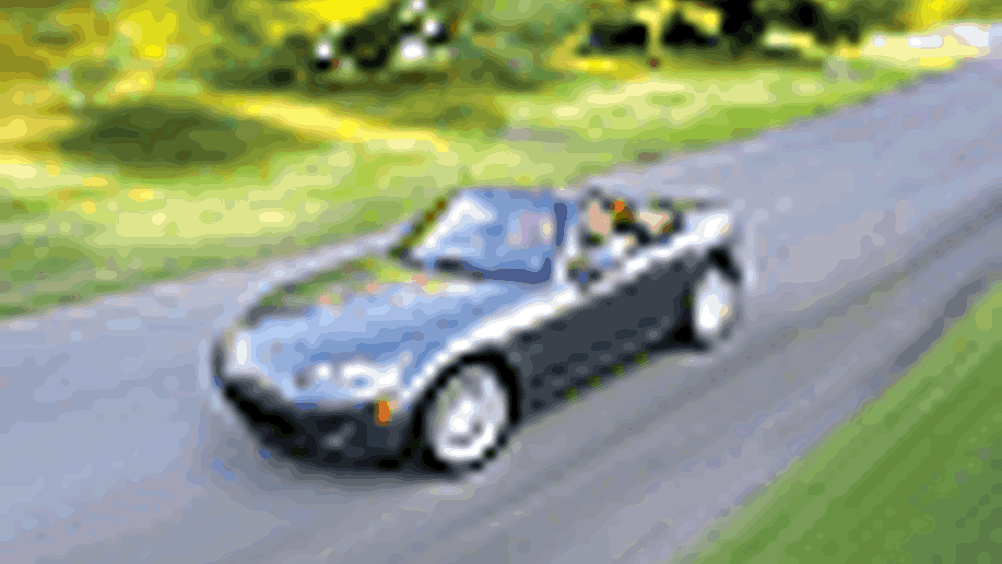Highway patrol
Digital road tracking systems could reveal bottlenecks to help traffic flow smoothly at optimum speeds

Motorists could once again experience the joy of the open road and fresher air thanks to a highly-accurate vehicle tracking system which can reveal traffic jams and their causes.
’It can even identify the position of every road hump and how each one affects traffic speeds,’ said Dr Phillip Tann, inventor and managing director of Autopoietic Systems. He hopes traffic engineers will use his data to look at networks to eliminate pinch-points so traffic can flow smoothly at the optimum speeds.
The key to his plan is the creation of a highly-accurate 3D road map that also shows dynamic traffic speeds. To do this, he has built his own ’green box’ vehicle trackers that use GPS to plot their location to within four metres. The data is sent back to Autopoietic’s base using GPRS and manually compared with existing maps so that it can be corrected to give a final accuracy of one metre.
’Often we don’t need to do much correction work,’ he said of the initial mapping process. ’In Newcastle city centre the positioning from GPS was fine. When we came to drive through Sunderland we got a lot of variation. It might be down to the position of the satellites at the time or to different atmospheric conditions.’ Vertical accuracy is within 1.5m, said Tann.
The manually-corrected data is then used to construct the foundation map, against which all further tracking information from the same roads is corrected ’on the fly’ by computer algorithms. ’The detail we’re getting keeps surprising us,’ he said. ’On one road, cars were repeatedly braking and speeding up. Then we realised it revealed the positions of all the speed humps.’
The project began when Tann was commissioned by BT to digitally plot the location of its 6,500 telephone exchanges. ’We had to look at up to 220,000 maps, some of which were even on linen and many of which had to be scanned,’ he explained. ’We wrote algorithms that could recognise all the map symbols for the different features on the telephone network maps.’
He then applied his experience of telephone networks to the roads but found there were cost barriers. ’Ordnance Survey licences can be very expensive, and the information on many maps can be superfluous,’ said Tann, ’For example, churches shown on small-scale maps may have become obscured by later building and the positions of kerbs shown on large-scale maps may be irrelevant.’
So, with £60,000 from NStar Finance, a regional equity investor in the north-east, he is creating his own maps, the live tracking system and a growing data archive. ’Eventually this will build a map of the UK showing average traffic flow in any area which means logistics firms will be able to miss traffic blackspots,’ said Tann.
He is a relatively late entry to the traffic flow data market. There are already four major suppliers of live and historical data to the Department for Transport, but Tann believes he can offer a better service. ’Most vehicle tracking is only accurate to within 50m. Ours is good to within one. And many of the vehicles already being tracked have experienced and well-informed drivers who avoid the congestion blackspots so their data doesn’t help traffic engineers,’ said Tann.
His system’s advantages depend to some extent on choosing the right kinds of vehicles for the trackers. The foundation map for the north-east was created by putting green box trackers into driving instructors’ cars. They respect lane markings and so generate reliable position information about road layout and lanes. ’Taxi drivers cross lanes when it suits them so we couldn’t use that data,’ said Tann.
Now that it’s up and running, how does he plan to expand his system? ’That’s the difference between an engineer and a salesman,’ he said, echoing the problem faced by many who come up with good ideas for technology.
But he is confident he has a good strategy. The trackers are now being used by taxis, couriers and Autopoietic’s own staff vehicles to generate live traffic speed data that is relayed to base within two milliseconds. Fleet managers can lease the boxes for £3.50 a month, a fraction of the cost of most trackers, and an order from one organisation with many service vehicles is about to be signed.
Apart from box leasing income, Tann hopes to sell the historic and live data to agencies responsible for traffic engineers. ’We can see exactly where cars accelerate and brake, where they are queuing regularly, where they crawl up gradients or get delayed,’ he said.
With such information at their fingertips, Tann believes the engineers will be able to improve road design so the traffic flows smoothly, reducing congestion and improving air quality.
Register now to continue reading
Thanks for visiting The Engineer. You’ve now reached your monthly limit of news stories. Register for free to unlock unlimited access to all of our news coverage, as well as premium content including opinion, in-depth features and special reports.
Benefits of registering
-
In-depth insights and coverage of key emerging trends
-
Unrestricted access to special reports throughout the year
-
Daily technology news delivered straight to your inbox










Water Sector Talent Exodus Could Cripple The Sector
Maybe if things are essential for the running of a country and we want to pay a fair price we should be running these utilities on a not for profit...